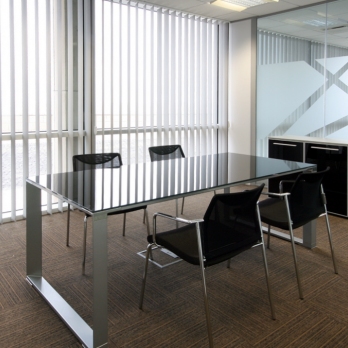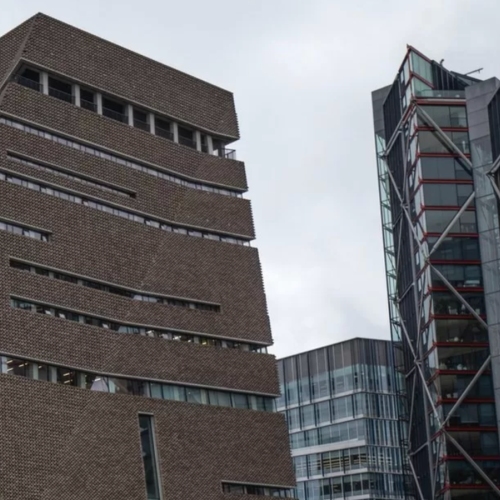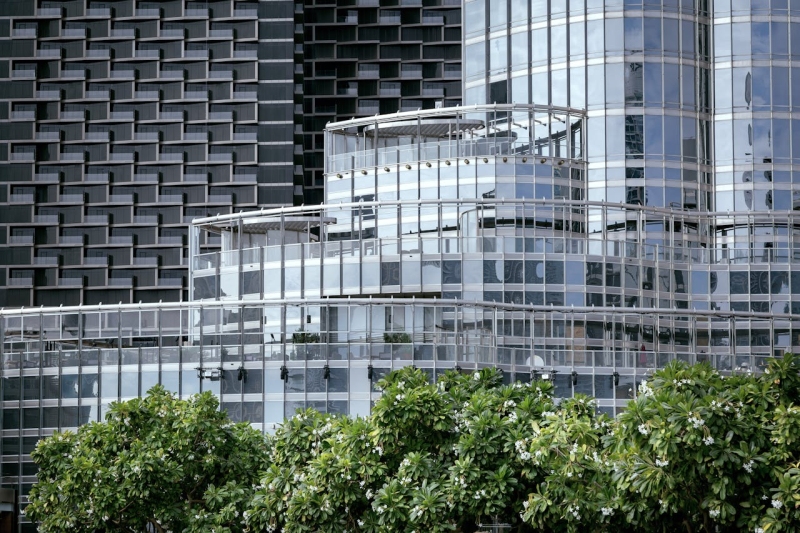The Building Safety Act 2022 (BSA 2022) contains provisions designed to protect leaseholders from the costs of fixing historic building safety defects, and enabling such costs to be passed on to those ultimately responsible for the defects.
The question of whether these provisions apply to costs incurred before the relevant parts of the BSA 2022 came into force is of huge significance, not least to leaseholders facing, or who may have already paid, costly bills for remediation works and interim safety measures.
We look below at URS Corporation Ltd v BDW Trading Ltd [2025] in which the Supreme Court confirmed that the retrospectivity of section 135 of the BSA 2022, which extends the limitation period for claims under the Defective Premises Act 1972, also applies to dependent claims such as claims in negligence, and consider what the Court’s purposive approach to the BSA 2022 might mean for two important cases currently before the Court of Appeal.
WolfBite - the key takeaways
• The BSA 2022 is a key part of the government’s response to the Grenfell Tower tragedy in which 72 residents lost their lives and over 70 others were injured.
• Amongst its wide-ranging measures, the BSA 2022 includes provisions that protect leaseholders from the costs of fixing historic building safety defects and enabling such costs to be passed on to those ultimately responsible.
• These particular provisions came into force on 28 June 2022.
• The extent to which these measures apply to costs incurred before 28 June 2022 has enormous implications for leaseholders and landlords.
• This question has been considered in three main appeals.
• The Supreme Court has given its judgment in the first. It has confirmed, in URS v BDW, that section 135 of the BSA 2022, which extends with retrospective effect the limitation period for claims under the Defective Premises Act 1972, also applies to other dependent claims such as claims in negligence or for a contribution.
• Judgment is awaited from the Court of Appeal in Hippersley Point and Triathlon which, respectively, concern whether the leaseholder protections in Schedule 8, and Remediation Contribution Orders under section 124, apply to costs incurred before 28 June 2022.
• The Supreme Court’s purposive approach to the interpretation of the BSA 2022 in URS v BDW might hint at how the Court of Appeal may approach the two other appeals.
What was URS v BDW about?
The property developer BDW (the owner of Barratt and David Wilson Homes), had engaged URS to provide structural design services in connection with several high-rise residential developments.
Once the developments were completed, BDW granted long leases of the flats, transferred the common parts to third-party management companies and sold its remaining property interests to new owners.
Following the Grenfell Tower tragedy, and in response to government encouragement, BDW carried out investigations into the buildings and, in 2019, discovered structural design defects in two of the developments.
In 2020 and 2021, BDW carried out works to remedy the defects even though it no longer had any legal interest in the buildings and had not been threatened with any claims by anyone else. It did so because it considered that the defects presented a danger to the residents.
In 2020, BDW started court proceedings seeking to recover the costs of the remedial works from URS, alleging that URS had been negligent.
Section 135 of the BSA 2022 came into force on 28 June 2022, part-way through the court proceedings.
Section 135 retrospectively extended the limitation period for claims that had accrued under section 1 of the Defective Premises Act 1972 (DPA 1972), from six to 30 years.
Section 1 of the DPA 1972 imposes a duty on consultants, contractors and developers building new dwellings to work in a professional or workmanlike manner, use proper materials and ensure that dwellings are fit for habitation.
The extension of the limitation period meant that claims that might previously have been time-barred before 28 June 2022 due to the six-year limitation period that then applied, could now be brought if they related to works completed in the 30-year period before that date.
The case involved a number of complicated issues such as: whether BDW was entitled to recover the costs of the works given that it had carried out the works at a time when it had no property interest in the buildings and arguably no legal obligation to do so (it was); whether URS in fact owed a duty to BDW under section 1 of the DPA 1972 (it did); and whether BDW could claim a contribution from URS where there had been no judgment or settlement with any third party (it could).
The focus of this article, however, is specifically on the issue of retrospectivity.
Retrospectivity
The amendment introduced by section 135 of the BSA 2022 provides that where “by virtue of” section 1 of the DPA 1972 a person became entitled, before 28 June 2022, to bring an action against another person, no action may be brought after the expiry of 30 years (rather than six-years) from the date on which the right of action accrued.
The Act goes on to say that this provision is to be treated as always having been in force.
It was not in dispute that section 135 has retrospective effect in relation to claims brought under section 1 of the DPA 1972 itself.
The question was whether the retrospectivity of section 135 also applies to other claims that are dependent on section 1 of the DPA 1972 but not actually brought under that section, such as where the claim is for compensation for negligence or for a contribution under the Civil Liability (Contribution) Act 1978.
The Supreme Court considered that, as a matter of language, an action “by virtue of“ section 1 of the DPA 1972 was not limited to actions “under” that section but could equally apply to other actions dependent on it.
The Supreme Court went on to say that the importance of retrospectivity to Part 5 of the BSA 2022 was also relevant context. This was reflected not only in section 135 but “…in all the main changes to the law made by Part 5”.
That is of note because Part 5 contains the key provisions concerning who is, and who is not, responsible for fixing historic building safety defects and who should and should not have to pay. Part 5 includes section 124 (Remediation Contribution Orders) and introduces Schedule 8 to the BSA 2022 (which contains the so-called “leaseholder protections”).
The Supreme Court had regard to the Explanatory Notes that accompany the BSA 2022 and considered that a central purpose and policy of the BSA 2022 was to ensure that those responsible for historic building safety defects can be held to account. This purpose would be undermined if section 135 was interpreted narrowly. In order to achieve its purpose - of holding those responsible for building safety defects to account - it was necessary to interpret the general wording in section 135 as being applicable to the types of dependent claims made in this case.
To adopt a restrictive interpretation would, on the other hand, mean that, whilst a leaseholder would be able to bring a claim against a developer under the DPA 1972, that developer could not then make an onward claim against a contractor who was directly responsible for the defect.
The Supreme Court considered that this would result in incoherence and may penalise responsible developers who had been proactive in identifying and remedying building safety defects.
This was not just a matter of justice as between developers and those ultimately responsible. It could also prevent a developer being able to bring an onward claim necessary to fund the costs needed to meet its own obligations to homeowners.
URS argued that treating the extended limitation period under section 135 as having applied when BDW carried out the remedial works, when in reality that section did not exist at that time, would `falsify history’ which was not permissible. In answer to this, the Supreme Court said that section 135 did not purport to change any historical fact. BDW did have a legal liability to homeowners under section 1 of the DPA 1972 when it carried out the repair works, but it was just that the limitation period at that time meant that it would have had a defence to such a claim. What section 135 had changed was to remove that limitation defence.
What other BSA 2022 cases are considering retrospectivity?
Judgment is awaited from the Court of Appeal in the cases of Adriatic Land 5 Ltd v The Long Leaseholders at Hippersley Point and Stratford Village Developments Partnership (1) and Get Living Plc (2) v Triathlon Homes LLP (1) and East Village Management Ltd (2).
Hippersley Point
In this case, the landlord started an application before the BSA 2022 came into force seeking dispensation from the statutory obligation to consult with residential long leaseholders about proposed major works. The works in this case related to remediating building safety issues with the external façade of a block of flats and interim fire safety measures.
The First-tier Tribunal granted dispensation but imposed a condition that the landlord should not be entitled to recover its costs of the application from the leaseholders. The landlord appealed.
A further issue arose on appeal, namely whether the landlord’s costs of the application were in any event covered by paragraph 9 of Schedule 8 to the BSA 2022 which came into force on 28 June 2022.
Paragraph 9 provides that no service charge is payable under a qualifying lease in respect of legal or professional services relating to the liability (or potential liability) of any person incurred as a result of a relevant building safety defect defect.
In this case, the dispensation application had started, and the costs relating to the application were incurred, before paragraph 9 came into force.
The landlord argued that paragraph 9 should not be read as having retrospective effect, and that the costs of the dispensation application did not fall within the types of costs covered by paragraph 9 anyway.
The Upper Tribunal disagreed on both counts.
The Upper Tribunal considered that, although paragraph 9 does not expressly state that it has retrospective effect, and there is a general presumption that legislation is not intended to operate retrospectively, the wording of the legislation was not framed by reference to when the service charge was incurred or became payable.
Rather, paragraph 9 simply removed the liability to pay for legal and professional services relating to the liability of any person incurred as a result of a relevant defect. It did not matter when those costs were incurred or when they became due for payment.
The blunt answer to the argument that this might cause unfairness to landlords was, so the Upper Tribunal thought, that the leaseholder protections were a self-contained code - a one-off statutory intervention designed to deal with the serious problems with historic building safety defects in taller buildings.
Parliament had decided that specified categories of costs set out in Schedule 8 to the BSA 2022 are not payable through the service charge. The costs of the dispensation application fell within those categories. These costs “related to” the landlord’s liability or potential liability incurred as a result of the building safety defects.
The landlord has appealed the Upper Tribunal’s decision.
The Court of Appeal heard the appeal in March 2025, and judgment is awaited. It will decide whether the leaseholder protections in Schedule 8 of the BSA 2022, and paragraph 9 in particular, operate retrospectively or whether they only apply to costs incurred after 28 June 2022.
Triathlon
Section 124 of the BSA 2022 allows an interested person (including a leaseholder of a flat or of the whole building) to apply to the First-tier Tribunal for an order requiring a current or former landlord or developer, or someone associated with them, to meet costs incurred or to be incurred in remedying relevant defects in medium and high-rise buildings. The tribunal may make such a Remediation Contribution Order if it considers it "just and equitable" to do so.
In December 2022, the long leaseholder in this case applied for a Remediation Contribution Order to recoup money that it had paid in service charges in respect of interim fire safety measures and investigative and preparatory works, and requiring the landlord to repay several million pounds that the management company had paid in remedying defects.
The issue was the extent to which the right to a Remediation Contribution Order in section 124 applies to costs incurred before 28 June 2022.
As with paragraph 9 of Schedule 8, section 124 of the BSA 2022 does not expressly say that it is intended to apply to costs incurred prior to the date it came into force.
Two Upper Tribunal judges heard the case sitting as judges of the First-tier Tribunal.
The two judges were “in no doubt” that section 124 allows Remediation Contribution Orders to be made in respect of costs incurred before 28 June 2022. They considered that the language was clear and unlimited – the provision extended to costs that had already been incurred and those yet to be incurred. That, they said, was confirmed by the accompanying Explanatory Notes which the tribunal viewed as being a secondary aid to construction.
That Parliament’s intention was that costs paid before the commencement of Schedule 8, and before section 124 was in force, should be capable of being subject to a Remediation Contribution Order was consistent with the purpose and structure of Part 5 of the BSA 2022 that the radical protection it affords leaseholders should not be restricted by precise distinctions of time.
The tribunal found that these measures provide for wholesale intervention in and beyond normal contractual relationships in order to transfer the cost of remediation from individual leaseholders to landlords, and to distribute liability between landlords and developers and their associates according to criteria that Parliament has decided are necessary and fair.
The tribunal considered that to find otherwise would mean that leaseholders who had already paid for the costs of measures by 28 June 2022 would have no remedy to recover those sums, no matter how much they might have paid.
The judges thought it inconceivable that Parliament could have intended that leaseholders in unremediated buildings would be protected, but those in a remediated building that had paid for the building to be made safe were left to bear the full costs themselves and prevented from seeking reimbursement under section 124.
Similarly, it could not have been intended that someone who had refused to pay a service charge demand before 28 June 2022 would be in a better position than their neighbour who had paid.
In the tribunal’s words: “the sums involved in remediation are too great, and the consequences for individuals too extreme, for such a haphazard pattern of protection to have been Parliament's intention”.
The landlord has appealed the First-tier Tribunal’s decision.
The Court of Appeal heard the case in March 2025, immediately after Hippersley Point. It will decide whether a Remediation Contribution Order can be made in respect of costs incurred before section 124 of the BSA 2022 came into force on 28 June 2022 and, if so, whether such an order should have been made in the circumstances of this particular case.
What might URS v BDW mean for the appeals in Hippersley Point & Triathlon?
The arguments in Hippersley Point and Triathlon are different, but the Supreme Court’s decision in URS v BDW suggests that the direction of travel is in construing the BSA 2022 so as to give effect to the fundamental purpose of the protections it seeks to extend to leaseholders.
Given the Supreme Court’s focus not only on the language of section 135 but also on the wider context and purpose of Part 5 of the BSA 2022, it is perhaps more likely that the Court of Appeal will adopt a similar, purposive, approach when deciding if the leaseholder protections are capable of applying to, and Remediation
Contribution Orders can be made in respect of, costs incurred before 28 June 2022.
We will provide an update once we have heard from the Court of Appeal.





